What’s the latest in health policy research? The Essential Scan, produced by the USC-Brookings Schaeffer Initiative for Health Policy, aims to help keep you informed on the latest research and what it means for policymakers. If you’d like to receive the biweekly Essential Scan by email, you can sign up here.
State Policies Drive ACA Enrollment Levels as Federal Government Disengages
Study By: Rachel A. Burton, Rebecca Peters, Erik Wengle, Caroline Elmendorf, and Joshua Aarons
Despite Congressional efforts to repeal and replace the ACA, as well as several actions taken by the federal government meant to hinder enrollment in the program, 15 states actually saw higher enrollment in their ACA marketplaces this year and total individual marketplace enrollment dropped by only 3.8 percent from 2017 to 2018– far less than many health policy experts predicted. Researchers from the Urban Institute interviewed stakeholders in five states to understand these trends. Their new report details individual state profiles and provides several cross-state findings. Price was seen as a main driver by interviewees of consumer decision-making and marketplace enrollment, with consumers drawn to lower-premium plans. In the states with increased enrollment, insurers mounted robust advertising campaigns, state officials publicly opposed repeal and replace efforts, and usage of social media was increased to promote enrollment (including new tools to more easily facilitate consumer selection). Further, open enrollment periods were extended past the six-week HealthCare.gov period. The researchers concluded that while 2019 will surely bring more changes and uncertainty about the fate of the ACA marketplaces, it will be up to the states to decide whether and how to continue to bolster them. Full study here.
Growing Number of Unsubsidized Part D Beneficiaries with Catastrophic Spending Suggests Need for Out-of-Pocket Cap
Study by: Erin Trish, Jianhui Xu, and Geoffrey Joyce
Medicare Part D currently lacks an out-of-pocket cap; instead beneficiaries with high prescription drug spending pay five percent on all prescription drugs once they reach catastrophic coverage. A recent study found that more than one million Part D enrollees who were not eligible for assistance with their out-of-pocket drug spending reached the catastrophic coverage phase of their benefit in 2015 – more than doubling since 2007. Furthermore, the researchers found the share of beneficiaries reaching catastrophic coverage without a low-income subsidy increased considerably, from 18 to 28 percent, between 2007 and 2015. In terms of total Part D expenditures, the portion of Part D expenditures occurring in the catastrophic phase has also significantly increased over the years, from 18 to 37 percent. This is driven in large part by spending from beneficiaries without a low-income subsidy. The researchers estimate that implementing a cap for all Part D enrollees in 2015 would have raised premiums by only one to four percent – amounting to a monthly premium increase of only $0.40- $1.31 per member. Full study here.
Results of Medicare Bundled Payment Program Probably Not Generalizable
Study by: Andrew S. Oseran, Sydney E. Howard, and Daniel M. Blumenthal
Medicare’s Bundled Payments for Care Improvement (BPCI) is a voluntary pilot program that evaluates bundled payments for several common cardiovascular conditions. As annual costs of treating cardiovascular disease are projected to exceed $818 billion by 2030, bundled payments offer an approach for improving quality and reducing unnecessary resource use. A newly-released retrospective cross-sectional study of hospitals participating in BPCI aims to determine whether program participants were representative of US acute care hospitals and identify factors associated with participation. In comparison to nonparticipants, BPCI participants were larger, more likely to be privately owned or teaching hospitals, had lower Medicaid-bed day ratios, and were less likely to be safety-net hospitals. They were also more likely to have cardiac intensive care units, cardiac catheterization laboratories, and cardiac surgery on site. BPCI participants had higher discharge volumes for acute myocardial infarction and congestive heart failure, and lower 30-day risk adjusted readmission and mortality rates for these illnesses. Overall, the researchers suggested that selection bias may cause BPCI outcomes to have limited external validity, especially among small and safety-net hospitals with limited cardiac services. Full study here.
“This demonstrates how limited voluntary demonstrations are for learning about payment reforms. While mandatory demonstrations or even implementing reforms without testing more than administrative feasibility appear challenging for politicians, they are essential for reforming provider payment in a reasonable time frame.” – Paul Ginsburg, Director, USC-Brookings Schaeffer Initiative for Health Policy
Impossible to Reliably Identify “Wasteful” End-of-Life Spending in Medicare
Study by: Liran Einav, Amy Finkelstein, Sendhil Mullainathan, and Ziad Obermeyer

Critics of rising levels of Medicare spending often point to the fact that approximately one quarter of the program’s annual spending goes to the five percent of beneficiaries that die each year. These critics believe that spending money on beneficiaries that are nearing the end of their lives is wasteful and should therefore be limited. However, a new study shows that it’s almost impossible to distinguish Medicare beneficiaries who will die within the next year from those beneficiaries who will not. Using advanced machine-earning algorithms on a Medicare claims dataset from 2007-2008, researchers were unable to reliably predict which Medicare beneficiaries would die in 2008. Furthermore, the beneficiaries that the model predicted had the highest mortality risk only accounted for a small share of total spending-beneficiaries in the top percentile of mortality risk (for whom death was still far from certain) accounted for less than five percent of total spending. These findings suggest that even when accounting for potential advancements in machine-learning algorithms, it is unlikely that Medicare administrators will be able to achieve significant savings by identifying patients for whom death is near certain. Instead, the authors suggest that researchers and policymakers focus on ensuring a high quality of care for very sick patients and on evaluating the impacts of specific healthcare interventions on survival rates and on the palliation of symptoms. Full study here.
The Brookings Institution is committed to quality, independence, and impact.
We are supported by a diverse array of funders. In line with our values and policies, each Brookings publication represents the sole views of its author(s).
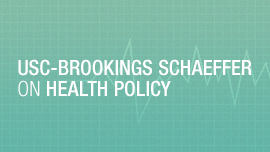
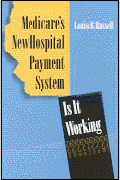
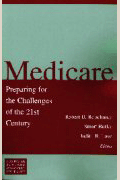


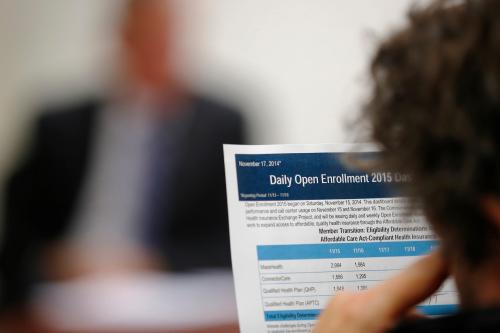





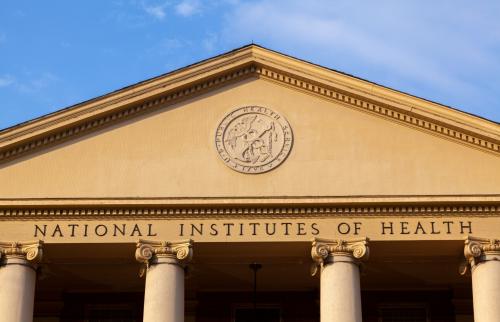
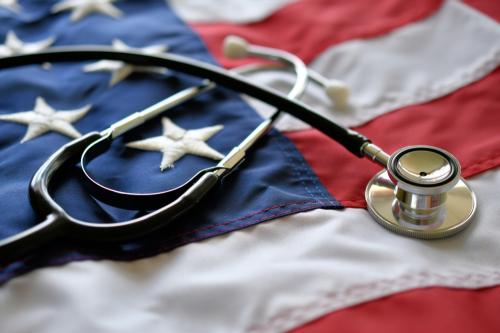
Commentary
The essential scan: Top findings in health policy research
July 12, 2018